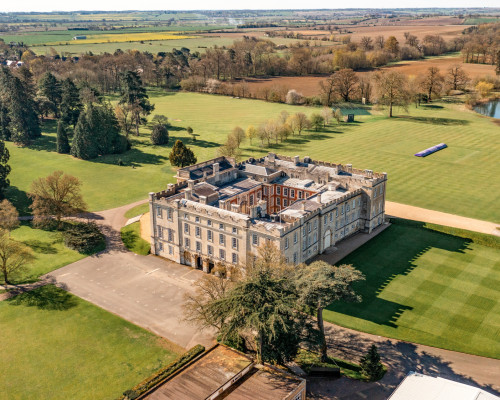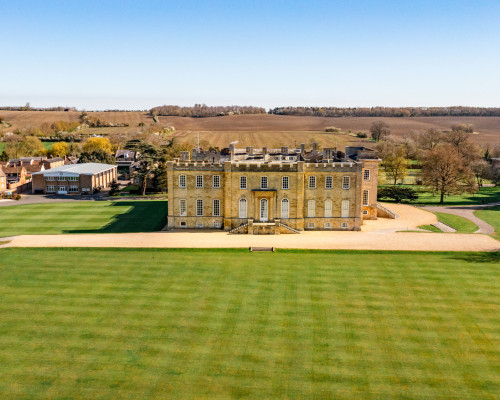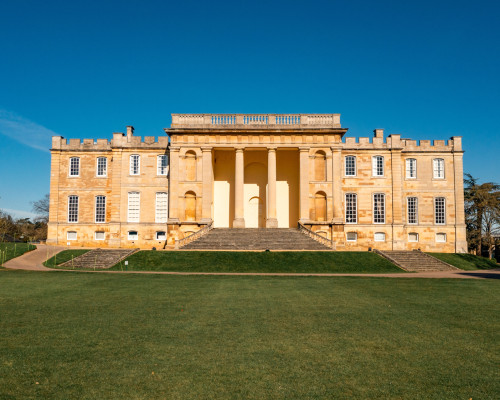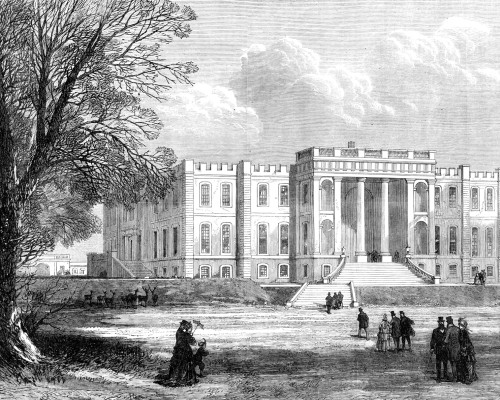Vanbrugh and Kimbolton
Vanbrugh knew the Duke of Manchester well as they were both prominent members of the Whig political party as well as the Kit-Cat Club in London. In 1707, after the south-east corner of the castle collapsed, Vanbrugh and his assistant Nicholas Hawksmoor were called in to redesign the whole of the South front. Although Vanbrugh wanted to rebuild the castle in the then fashionable classical style, he also gave it what he called a ‘castle air’ in acknowledgement of its long history as a fortified manor house. After adding the battlements, Vanbrugh persuaded the Earl to let him reface the other three parts of the castle in a similar style.
Vanbrugh was also keen to lavishly upgrade the entertainment rooms, building the saloon as a large ‘room of parade’ between the drawing room and bedchamber. Kimbolton is an excellent example of how Vanbrugh was influenced by both his romantic attitude to the medieval past and his love of all things theatrical. By contrasting the castellations with a plain, more austere style he created what he called a ‘manly beauty’. He was also conscious of the fact that Kimbolton, unlike Blenheim, was a genuine castle and he wanted that to be clear to all who saw it.
Visit Kimbolton Castle's website
 Back to homepage
Back to homepage











